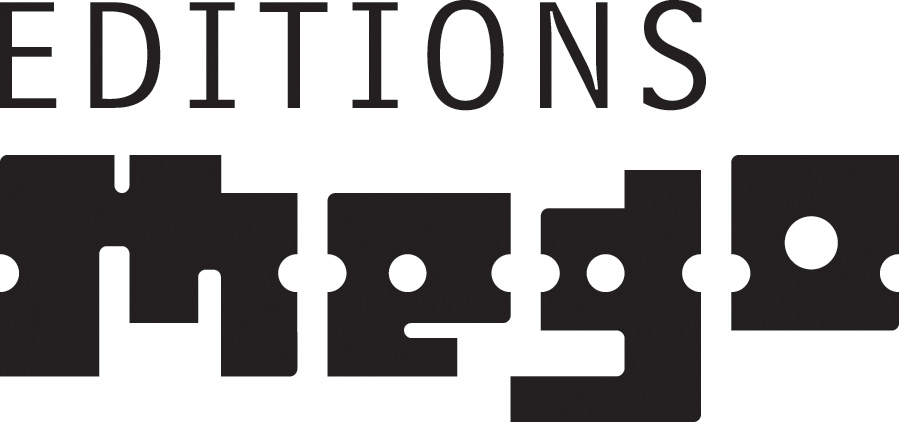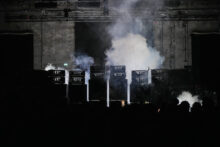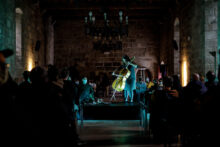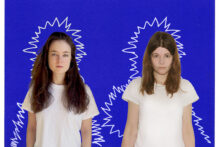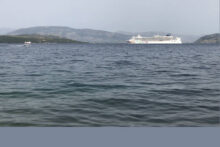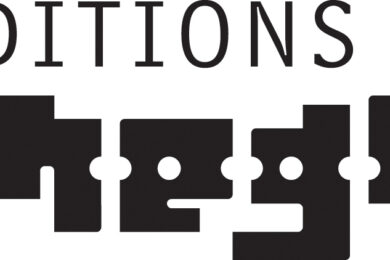“You could write a whole book about this,” says Stephen O’Malley. The Sunn O))) co-founder is talking about the network of musicians, sub-labels and visual artists connected by Editions Mego and its predecessor, Mego. It’s a topology which, over the last three decades, has connected far-flung corners of groundbreaking music. Early on Mego documented artists taking radical approaches to computers as performance and composition tools, captured particularly acutely on Russell Haswell’s pair of Live Salvage albums. It’s released landmark albums of shimmering glitch by Fennesz and Oneohtrix Point Never. But ‘electronics’ only scratches the surface. Among the laptops and synthesizers are records of seared pedal steel, disco-infused guitar epics, and effervescent pop. The label transcends genre. The connecting thread is perhaps intense focus. Albums on Mego see artists meticulously bend and extend their chosen sound palettes.
O’Malley was already a fan of Mego when he met its co-founder, the late Peter Rehberg, during Sunn O)))’s first European headline tour in 2003. By then, Mego had been active for close to a decade and Rehberg had released multiple scintillating electronic records as Pita. He became an occasional live member of Sunn O))), playing laptop. In 2006, O’Malley and Rehberg formed their duo, KTL. O’Malley became a regular graphic designer for Editions Mego and Recollections GRM – an Editions Mego sub-label documenting pioneering work from Paris’ GRM studios. It’s one example of the pathways that spin out from each Mego entry point.
The label’s discography is a diagram as much as an archive. Each release is a node to a multitude of new connections and directions. From Fennesz you arrive at Fenn O’Berg, his trio with Jim O’Rourke and Rehberg. Haswell leads to Florian Hecker via their duo Haswell & Hecker, and Japanese noise artist Pain Jerk (who collaborated with Haswell on 2014’s Electroacoustic Sludge Dither Transformation Smear Grind Decomposition nO!se File Exchange Mega Edit). If you only know O’Malley for his role in Sunn O))), Mego flings you into an expanded universe, as well as KTL (who released the majority of their catalogue on the label), there are collaborations with François Bonnet (the current director of INA GRM), and his curation of the sub-label, Ideologic Organ.
“God bless [Sunn O)))’s co-founder] Greg Anderson, he’s my brother,” says O’Malley. “But Peter Rehberg was my main musical collaborator in those years.”
After US synth voyagers Emeralds released two albums on Editions Mego, the band’s John Elliott started the sub-label Spectrum Spools. It’s another gateway. “Peter had told me he offered Daniel Lopatin [Oneohtrix Point Never] a sub-label as he was a Mego artist at the time, but he had declined,” Elliot recalls. “I told him I could take a crack at it as I felt like the best American underground stuff wasn’t really being represented.” Crucial records by Container, Robert Turman, Bee Mask and more ensued.
Mego, originally an acronym for ‘My Eyes Glaze Over’, was founded thirty years ago when Rehberg and General Magic, the duo of Ramon Bauer and Andi Pieper, wanted to release their debut collaboration, the Fridge Trax 12”.
“It made sense to run a label during the late 1990s because the mainstream music industry kept CD and vinyl prices at somewhat artificially high levels,” Bauer and Pieper explain over email. “This allowed smaller editions of 500 or 1,000 units to generate decent profits.”
They were early adopters of the internet’s potential to distribute music and build connections, launching an online record store, M.DOS (Mego Direct Order Service) in 1997, which stocked their releases alongside records from like-minded artists and labels. A booking agency followed. “All of these efforts laid foundations for a network that still exists today in various forms,” Bauer and Pieper suggest.
As its name indicates, the Fridge Trax 12” is made from the sounds of refrigerators. It jacks into the history of musique concrète while vocalisations in the record have as much in common with Kurt Schwitters or Hugo Ball as Pierres Henry and Schaeffer. After the hum and drone of the opener it enters lopsided club territory. Fridge Trax travels well beyond quirky source material.
“Peter even managed to sneak into the cooling chamber of the Blue Box, a local bar in Vienna where he was a resident DJ with his Club Duchamp, to capture dramatic coolant gurgling,” General Magic recall. “In the end, there were several different fridges captured. These were mostly battered models past their peak as found in the various flats we were living in at that time. Armed with our recordings, we headed to Andi’s studio in Berlin to record some more fridge sounds and ultimately produce four tracks from the material, using an Atari ST, an Akai S1000, and a sound editor running on a Mac IIci. It was a quick job over about a few days. With the master DAT tape in our hands, it was time to launch the label.”
Bauer and Pieper stepped aside from the original label around 2005, and Editions Mego opened with Rehberg in charge in 2006. When he passed away in July 2021, his partner, Isabelle Piechaczyk and their daughter, Natasha Rehberg, took over in collaboration with Morr Music. Between 2021 and 2022 they put out releases already underway and worked on others Peter had planned, such as Tojiko Noriko’s Crépuscule I & II. The label continues, with records scheduled to be released through 2026.
“From my point of view, Mego doesn’t seem to have stopped at any point. Rather, I feel it has followed a flow that Peter had mapped out over the years,” Piechaczyk states.
Marking Mego’s 30th anniversary, 2025 has seen releases of new material including General Magic’s Bosko (Rehberg had encouraged the duo to start making music again in 2019 after a lengthy hiatus), Haswell & Hecker’s UPIC Diffusion #23, and Liminal States, a hitherto unreleased theatre soundtrack Rehberg created for a piece by Margrét Sara Guðjónsdóttir.
Jim O’Rourke – ‘And I’m Singing’ from I’m Happy, and I’m Singing, and a 1,2,3,4 (2001)
Jim O’Rourke: I met Peter and Christian Fennesz just as Mego was starting, at a festival in Vienna called Hyperstrings. Fennesz was playing and his 10”, Instrument, was just coming out. Peter gave me a copy and we hung out that weekend. I’m Happy’s title is something Murry Wilson, the father of the Wilson brothers from the Beach Boys, would say into the talkback mic before they recorded takes. I had an engineer friend who gave me a collection of now famous in-studio recordings of bands fighting, and that was on there. The record is all from live shows I was doing from 97 to 99 or so. I started using a laptop, I believe at first a Mac 520c, fairly early on. There was a lot of hubbub with some of the more traditional free jazz fans that I was using a laptop. Soon after Fenn O’Berg’s first gig, all three of us got Pismo Macs. Everything on I’m Happy was performed using that computer, and all recorded to minidisc, which were easy to get in Japan then. All the Fenn O’Berg recordings (except for In Stereo) were also recorded to the same minidisc player. At the time I was mostly using Max, and the patches I put together for my own shows were much more oriented towards particular tracks I was doing live, for example ‘I’m Happy’ and ‘1,2,3,4’ I played many times live, and each had its own distinct patch.
Tujiko Noriko – ‘White Film’ from 少女都市+ [Shojo Toshi] (2001)
Tujiko Noriko: I remember Tokyo [when I think about this album]. It’s a beautiful, mysterious, romantic city. I was living my youth with ignorance, fearlessness, and lots of laughter – and underneath all that, there was also something like sadness that would peek through the cracks now and then. The town and the architecture shaped and influenced my spirit. I grew up alongside the city, so much so that I feel the music was born from it. I made the album in my flat in Ikebukuro, but I mixed the tracks in a friend’s apartment, because I didn’t know how to mix at the time. In summer, my flat got so hot, I was worried the heat would damage my musical equipment. Since I had so much time for myself, sometimes I’d just wake up and immediately jump into happily making music. In Aoyama, Tokyo, I timidly said ‘hi’ to Peter when he played there, and gave him a cassette tape with the demo of this album. He listened to it after he got back home, and he liked my music. I admired the way he radiated a kind of enigmatic brevity, with warmth, clear vision, and humour.
KTL – ‘Forest Floor 3’ from I (2006)
Stephen O’Malley: Peter called me in 2005 asking if I wanted to work on a new dance piece with him and choreographer and theatre director Gisèle Vienne. We went to Gisèle’s family house in Grenoble to work on music for ‘Kindertotenlieder’[KTL’s name is an abbreviation of the title]. We did a bunch of recording sessions in her parent’s house, in their winter garden, and at some other sites around Grenoble, including a studio in a bunker at a fortress. At the start we were just part of this dance piece. Then we got asked if we’d like to play a concert before one of the premieres. We just played live on the set design. That was the first show as a band. In the theatre piece, we were supposed to be a black metal band playing at a funeral in a forest in a snowstorm. Peter and I certainly aren’t black metal musicians, but we were using that aesthetic language, and the computer music aesthetic at the same time. It’s something I tried to reflect in the image in the artwork on the KTL albums, and all the typography I made for the project. The first album’s cover was made using a Xerox machine basically.
Hecker – ‘Acid In The Style of David Tudor’ from Acid In The Style of David Tudor (2009)
Florian Hecker: I was living in LA in 2004 when I encountered the David Tudor papers at the Getty Research Archive. The very heterogeneous nature of all materials related to Tudor’s life intrigued me. Notes, personal correspondence, recipes, drawings, circuits… At the same time, I met Dan Slater, whose work I knew from his writing on chaotic sound synthesis and analogue computers. I was also reading texts by [conceptual art collective] Art & Language at this time, where the “in the style of” part of the title stems from. These are the three trajectories that set up the starting point.
The album came with an essay by Robin Mackay. How did you know about Robin’s work?
FH: They wrote a super generous essay on Blackest Ever Black, the first album Russell Haswell and I released with the material we recorded with Xenakis’ UPIC system in 2004. The text is brilliant and a superb amalgamation of reflections on Xenakis and the UPIC. After that, we collaborated on many projects, most recently, by coincidence, again in LA, in the exhibition and publication Resynthesizers.
Emeralds – ‘Now You See Me’ from Does It Look Like I’m Here? (2010)
John Elliot: We met Peter at No Fun Fest in New York. I dared him to put out an Emeralds record as a joke and he warned me to not mix the Vicodins I was buying off the security guards working at the event with all the booze we were drinking. Every Emeralds LP ended up quite different from the ones that came before it, a lot of that had to do with our evolution as a non-funded, self-recorded project. We started out recording on tape decks and DAT machines with no outboard processing. It’s why What Happened and Allegory of Allergies have an intangible magic, all the work was done in real time with nothing extra. Emeralds existed in this beautiful era before technology became truly omnipresent and assimilated humanity into borgs. I attribute our longevity to having existed right on the cusp of that transition. It’s hard to think of anything other than the recording process when I listen to our music. For instance on ‘Now You See Me’ I was making a riff on a Korg MS-2000 unit that had sticky pads. I was playing it by hand and it was difficult to get the timing right, or even when I did the note sometimes wouldn’t trigger.
Oren Ambarchi – ‘Hubris Part 3’ from Hubris (2016)
Oren Ambarchi: I was determined not to make a complicated record. I’d just made Quixotism, there was a lot of people on that and it was really hard to make. I was burnt out. Hubris ended up having, like, 98 guitar tracks, but in a way it’s straightforward. I was listening to a lot of older disco 12″s and remember being into Tulio De Piscopo’s ‘Stop Bajon’ 12″, specifically the instrumental version on the b-side. There’s briefly two palm-muted guitars, panned hard left and right, doing these funky patterns that go in and out of phase. Magnifying that small element was one of Hubris’ jumping off points. ‘Hubris Part 2’ is four different parts of Jim O’Rourke’s 6-string electric bass. I was listening to it and thought that it needed something, but I wasn’t sure what. My partner, Crys Cole was on the phone with her mother in the other room while I was listening to Jim’s playing and the combination sounded intriguing. So I set up a mic without telling her and I recorded her responses to her mum while I responded to Crys’s responses in the room that I was in. It’s kind of an absurd dialogue/miscommunication but it did the trick.
Heather Leigh – ‘Gold Teeth’ from Throne (2018)
Heather Leigh: I visited Vienna while on tour in a trio with Peter Brötzmann and Toshinori Kondo and Peter invited me over to his flat. We spent the afternoon looking through his books and records and his incredible modular setup. He was beaming and proud of his creations though he also seemed slightly nervous, like there was something he wanted to talk to me about but just couldn’t. Later he showed up to the concert and pulled me aside and said, “Will you please record and release a new solo record for me but this time I want it on Editions Mego.” [Her debut solo album, I Abused Animal, was released on Ideologic Organ] I was so honoured and appreciated the old school approach of asking me in person rather than by email. I said yes right away and he paid for my studio time with the late John Hannon at NO Recordings in Essex. I went down for a week and stayed with my close friend [and tQ contributor] Jennifer Lucy Allan who lived in Southend-On-Sea. I’d record all day then at night listen back to what I’d done with Jennifer. She had a hand in helping me refine lyrics and giving me her honest opinion. She is credited as Spiritual Advisor on the album and she really was. The original title of the album was ‘Underwater Throne’ and was reflective of the cover image. But Jennifer said ‘No, there is nothing murky or submerged about this music, it is direct and the title should reflect that directness’, so I dropped ‘underwater’ and went more bold.
KMRU – ‘Klang’ from Peel (2020)
Joseph Kamaru: I had a phase where I was listening to weird experimental music, not focused much on the labels but I was struck by Mego releases. After hearing Klara Lewis’ album Ingrid I thought, maybe Peter would release Peel. How I got in touch with Peter was so smooth, my friend Aho Ssan forwarded his email to me and I just sent the tracks and Peter’s reply was “vinyl or digital?” We had a Skype call and worked on the release plans. I remember being home a lot when I was making Peel, and contemplating what would happen next in my life. It was a point where there was lots of change happening yet being stationary. I made it just after I almost got stuck in Montreal due to Covid border closures. The album’s named after ‘Peel’ train station in Montreal. It was part of my daily commute when I was there— and also fit perfectly with the idea of unfolding – constant slow shifts that are almost palpable. Peel turns five this year. It’s always wild for me, as the record feels so new to me every time I listen to it, and always heavy too after losing Peter.
Nik Colk Void – ‘FlatTime’ from Bucked Up Space (2022)
Nik Colk Void: I met Peter at Café Oto, just after a live set with Klara Lewis. I was packing down my gear when he came over and started pointing out which Eurorack modules we both had. The next day he emailed me and asked if I wanted to release a solo record on Editions Mego. I asked if we could make a record together instead. We recorded two albums together as NPVR and performed across Europe. Bucked Up Space followed a few years later. When I listen to the album now, it reminds me of a really positive and focused time. I felt creatively open, and I had the space to experiment and push my ideas forward. I was thinking a lot about how to stay close to the structure and weight of techno, but filter it through something more personal. Every sound was something I built, not borrowed, and that mattered to me. The process made me feel grounded and honest. It also reminds me of Peter, our creative friendship was full of stories, shared experiences over the years. I owe a lot to him, it was perfect.
Klara Lewis – ‘Thankful’ from Thankful (2024)
Klara Lewis: When Peter died I listened a lot to ‘Track 3 [from Pita’s album Get Out]. My memories of Peter are of a person who loved to take the piss and have fun. It was special to be able to listen to something he had made that was so heart wrenching. ‘Track 3’ kind of rips you apart and builds you up at the same time. I think this is similar to what I feel when I perform ‘Thankful’ live, when I am nearing what could be the peak of the track and need to decide if it can be pushed further – I think of Peter and the answer is always yes, it can. Listening to ‘Track 3’ and performing ‘Thankful’ help me get in touch with both loss and what I am thankful for. The contrasts of styles, moods and techniques on the album felt important to honour the openness and eclecticism of Editions Mego. I didn’t want to make an album that felt sentimental, it needed to have elements of humour and irreverence alongside the emotional. Recording the album I felt a strong connection and appreciation to what music means to me. How it can express things that words can’t. Its directness. The ukulele tracks came about when I was cat sitting for a friend and found a ukulele in the apartment. I recorded with my Tascam sitting on the bed. I am drawn to the limitation of the ukulele. Finding a melody that resonates using as simple means as possible.

